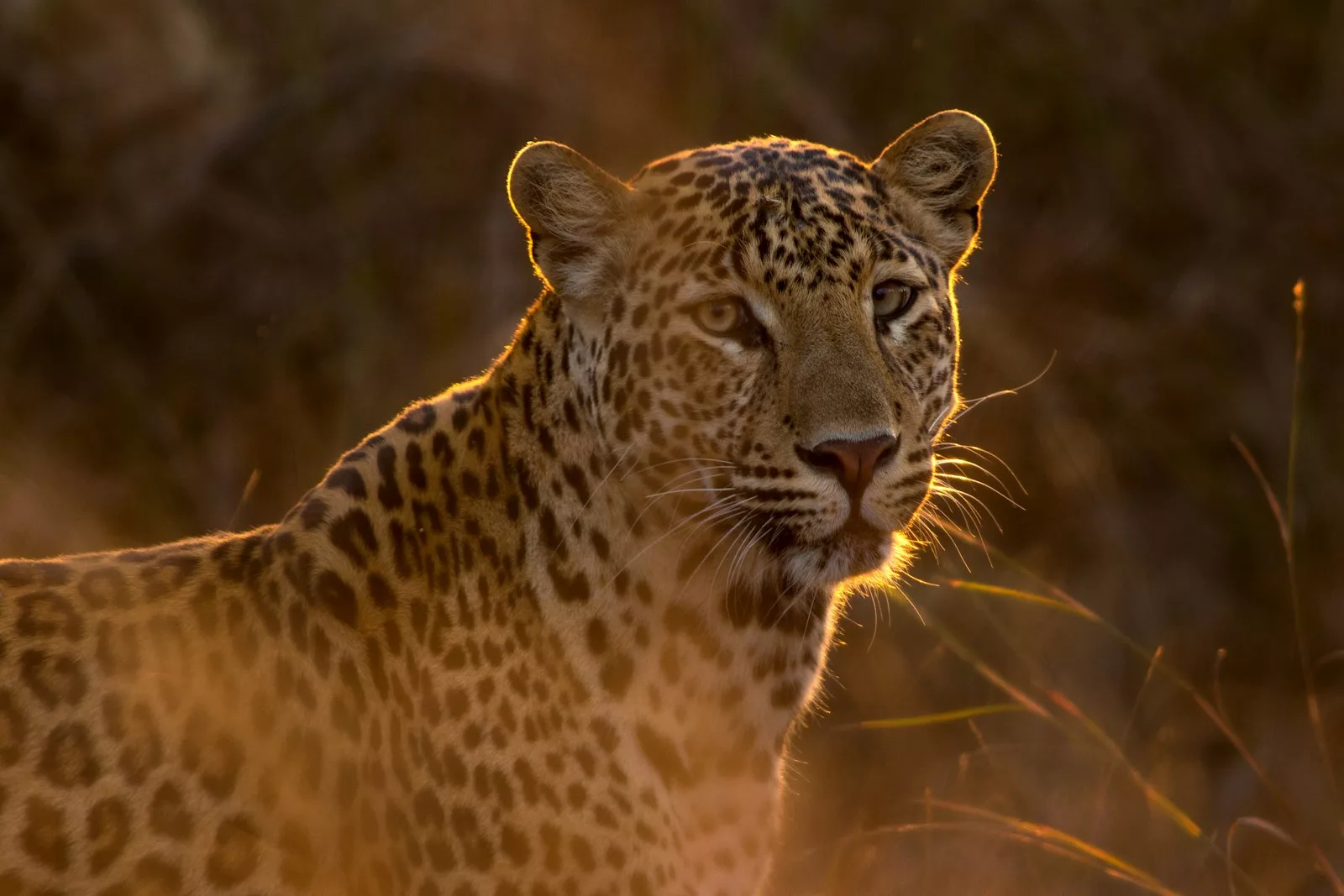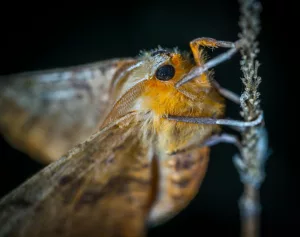Leopards are among the most mysterious and adaptable of the big cats, known for their unmatched stealth, strength, and beauty. While they often share the spotlight with lions, tigers, and cheetahs, leopards possess unique traits that make them one of nature’s most fascinating predators. Their ability to adapt to diverse environments, combined with their elusive nature, has captured the imagination of cultures worldwide. Let’s dive into 15 incredible facts about leopards, expanding on their remarkable characteristics and behaviors.
1. Leopards Are the Most Widespread Big Cats
Leopards are unparalleled in their adaptability, thriving in a variety of habitats across Africa, the Middle East, Asia, and parts of Russia. This remarkable range spans savannas, rainforests, deserts, mountains, and even urban fringes. While lions and tigers are more habitat-specific, leopards excel at making a home wherever food and cover are available.
In Africa, they inhabit the dense rainforests of the Congo Basin, the dry deserts of Namibia, and the open grasslands of the Serengeti. In Asia, leopards are found in the lush forests of India, the snow-covered Himalayas, and the temperate regions of China and Korea. Their ability to thrive in human-dominated landscapes, such as agricultural fields or near villages, demonstrates their remarkable adaptability. However, habitat loss due to human expansion poses a significant threat, despite their wide distribution.
2. They Are Masters of Stealth
Leopards have earned the nickname “ghosts of the forest” for their ability to move undetected through dense vegetation. Their camouflage, coupled with their silent, calculated movements, makes them one of the most effective ambush predators in the animal kingdom.
Their spotted coat, known as rosettes, is not just beautiful but also functional. The irregular patterns break up their outline, allowing them to blend seamlessly into shadows and foliage. Leopards rely on stealth to stalk their prey, often creeping within a few meters before launching a swift and powerful attack. This skill not only helps them hunt but also allows them to avoid competition with larger predators like lions and hyenas.
3. Leopards Can Climb Trees with Ease
Few predators rival leopards when it comes to tree-climbing abilities. Their strong, muscular limbs and retractable claws enable them to scale trees effortlessly, carrying prey that weighs as much as, or even more than, their own body weight. This incredible strength allows them to keep their kills safe from scavengers like hyenas and jackals.
Leopards often rest on tree branches during the heat of the day, using the elevated position to stay cool and keep an eye on their surroundings. Young leopards hone their climbing skills by playing in trees, while adult leopards can ascend quickly to escape danger. This arboreal behavior is a defining characteristic that sets them apart from other big cats, such as lions and cheetahs.
4. Their Spots Are Unique Like Fingerprints
Every leopard’s coat is a masterpiece of individuality. The black rosettes and spots on their golden fur are as unique as human fingerprints, making it possible to identify individual leopards in the wild. These distinctive patterns are not just visually striking but also provide excellent camouflage.
Researchers and conservationists use the uniqueness of leopard coats to track their movements and monitor populations. Through camera traps and field observations, scientists can identify specific leopards, gather data on their behavior, and better understand their ecology.
5. Leopards Are Solitary Creatures
Unlike lions, which are social and live in prides, leopards are solitary animals that spend most of their lives alone. They establish and defend territories using scent markings, scratch marks on trees, and vocalizations such as growls and sawing sounds.
Interactions between leopards are limited to mating and the time mothers spend raising their cubs. Even mating pairs spend only a few days together before parting ways. This solitary lifestyle reduces competition for food and allows leopards to maintain a stealthy presence in their environment.
6. They Are Excellent Swimmers
While many cats are averse to water, leopards are strong and confident swimmers. They often cross rivers and lakes while patrolling their territories or pursuing prey. In some regions, leopards have been observed hunting aquatic animals like fish and frogs, showcasing their versatility as predators.
Swimming also provides leopards with an escape route from larger predators. In areas like the Sundarbans mangrove forest, leopards share their habitat with Bengal tigers and use their swimming ability to navigate the intricate waterways and avoid conflicts.
7. Leopards Have Incredible Night Vision
Leopards are primarily nocturnal, relying on their exceptional night vision to hunt in darkness. Their eyes contain a specialized layer called the tapetum lucidum, which reflects light and enhances their ability to see in low-light conditions.
This adaptation allows leopards to hunt prey undetected under the cover of darkness, giving them a significant advantage over diurnal animals. Their sharp vision, combined with acute hearing, makes them formidable hunters both at night and during the day.
8. Black Leopards Are Known as Panthers
The term “panther” is often used to describe black leopards and black jaguars, which exhibit melanism—a genetic mutation that causes an overproduction of pigment, resulting in a dark coat. While they appear solid black, the distinctive rosette patterns are still visible under certain lighting conditions.
Black leopards are more common in dense forests, where their dark coats provide better camouflage. These elusive animals have inspired countless myths and legends, symbolizing mystery and power in various cultures.
9. They Have a Wide Variety of Prey
Leopards are opportunistic feeders, capable of hunting an incredibly diverse range of prey. Their diet includes small mammals, birds, reptiles, and even large ungulates like antelope and deer. This dietary flexibility allows leopards to survive in a variety of habitats, from rainforests to deserts.
In human-dominated areas, leopards have been known to prey on livestock, which often leads to conflict with local communities. Conservation efforts focus on mitigating these conflicts by promoting coexistence and reducing the economic impact of livestock losses.
10. Leopards Are Incredibly Strong for Their Size
Despite being smaller than lions and tigers, leopards are exceptionally strong for their size. They can drag prey several times their body weight up into trees, a feat that few other predators can match.
This strength is crucial for survival in environments where competition for food is intense. By storing their kills in trees, leopards ensure they can feed without interference from scavengers like hyenas and vultures. Their muscular build and agility make them one of the most versatile and capable predators in the animal kingdom.
11. Cubs Are Born Blind and Helpless
Leopard cubs are born after a gestation period of about 90-105 days. At birth, they are completely blind and weigh just 1-2 pounds. During these early days, they rely entirely on their mother for warmth, protection, and nourishment. Their small size and vulnerability make them easy targets for predators, so mothers are highly protective, often moving their cubs to new dens to avoid detection.
It takes about 10 days for their eyes to open, and as they grow, they start venturing out of the den, playing and exploring under their mother’s watchful eye. By the time they are around three months old, the cubs begin accompanying their mother on hunting trips, learning essential survival skills. They remain with her until they are about 12-18 months old, at which point they venture out to establish their own territories. The bond between a mother leopard and her cubs is incredibly strong, and she will fiercely defend them from threats, often risking her own life.
12. Leopards Can Both Roar and Purr
Leopards have a wide range of vocalizations that they use to communicate with other leopards or to mark their territory. They produce a distinctive sawing sound, which is a type of roar unique to leopards. This vocalization is often heard during mating season or when leopards are establishing their presence within their territory.
Unlike lions, which produce deep and resonant roars, leopards’ vocalizations are subtler but equally effective for communication. Interestingly, leopards are also one of the few big cats that can purr, a trait they share with other members of the Panthera genus. However, leopards can only purr during exhalation, unlike domestic cats, which can purr continuously. This dual ability to roar and purr reflects their unique position in the cat family tree and adds to their mystique.
13. They Are Masters of Adaptability
Leopards are known for their incredible adaptability, which has allowed them to thrive in a wide range of habitats and conditions. Unlike some predators that rely on specific environments, leopards can live in diverse ecosystems, from the snowy forests of Russia to the arid deserts of the Middle East.
This adaptability extends to their hunting techniques and diet. Leopards are opportunistic predators, capable of hunting a wide variety of prey based on what is available. In urban areas, they have been known to prey on feral dogs and livestock, demonstrating their ability to adjust their behavior to survive in human-dominated landscapes. Their resilience has made them one of the most enduring big cats, but it has also brought them into conflict with humans, highlighting the need for conservation efforts that focus on coexistence.
14. Some Leopards Are Snow Specialists
While leopards are typically associated with warmer climates, certain subspecies have adapted to life in snowy environments. The Amur leopard, found in the snowy forests of Russia and northeastern China, is one of the rarest and most endangered big cats in the world. With fewer than 120 individuals remaining in the wild, conservation efforts are critical to their survival.
Amur leopards have thick fur that grows longer in the winter to insulate them against freezing temperatures. Their large, padded paws act like snowshoes, allowing them to move easily through deep snow. These adaptations make them perfectly suited to their harsh environment, where they prey on deer, hares, and other animals that can survive in the cold. Protecting these snow specialists requires preserving their habitats and addressing threats like poaching and habitat fragmentation.
15. Leopards Play a Vital Role in Ecosystems
As apex predators, leopards are crucial to maintaining the balance of their ecosystems. By preying on herbivores like deer and antelope, they help regulate these populations, preventing overgrazing and promoting the health of vegetation. This, in turn, supports a wide range of other species, from insects to birds, that rely on the plants within the ecosystem.
Leopards also serve as indicators of a healthy environment. Their presence suggests that the ecosystem is functioning well, with adequate prey populations and sufficient habitat. Conservationists often focus on leopards as umbrella species, meaning that efforts to protect them also benefit other wildlife and the broader ecosystem.
However, human activities such as deforestation, urbanization, and hunting pose significant threats to leopards. By understanding and valuing the role they play in nature, we can work to ensure their survival and the health of the ecosystems they inhabit.
Conclusion
Leopards are among the most remarkable and resilient creatures on the planet, embodying a perfect blend of strength, stealth, and adaptability. Their ability to thrive in diverse habitats, their unique behaviors, and their critical role in ecosystems make them one of nature’s most fascinating predators.
Understanding these amazing facts about leopards deepens our appreciation for these enigmatic big cats and highlights the importance of conserving their habitats and ensuring their survival. As we learn more about them, it becomes clear that protecting leopards is not just about saving a species but also about preserving the delicate balance of life on Earth. Whether camouflaged in the shadows of a forest or resting high in the branches of a tree, leopards remind us of the beauty and complexity of the natural world.




